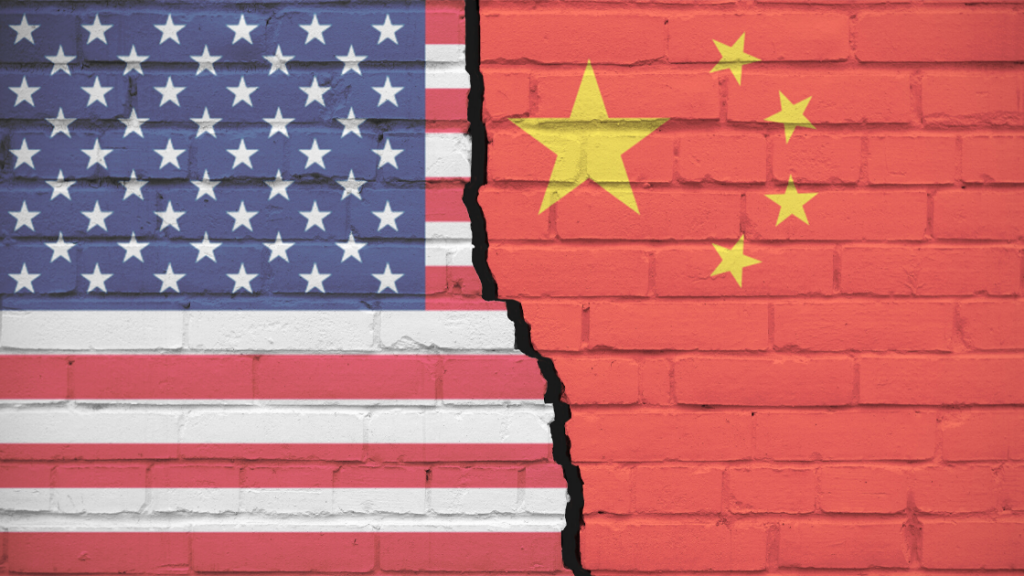Editor’s Note: The business press is starting to turn its attention to the fact that China decoupling will happen.
It’ll take work for corporate America to set up new supply chains and develop new consumers, but then again, the Chinese market took work, too.
[Michael Schuman | July 14, 2020 | Bloomberg]
China was supposed to be the promised land for American business — the lucrative, indispensable market of the future. But, as U.S.-China tensions escalate and calls grow louder for their two economies to decouple, CEOs across the U.S. are confronting a prospect that only a couple years ago would have seemed unthinkable: China may no longer be a reliable source of profits and production.
Sure, a nation with 1.4 billion increasingly wealthy shoppers and reliable supply chains isn’t so easily replaced. Companies will find it hard to hire skilled workers and replicate the networks of suppliers they enjoy in China. Many will hold onto their mainland factories to produce for the local market, regardless of global trade tensions.
But, a far greater degree of decoupling seems likely, even inevitable. It’ll take work to find alternatives to China — but then again, China took work, too.
Politicians on both sides of the Pacific are already taking steps to disentangle the world’s two largest economies, at least to some extent. The Trump administration, for instance, has curtailed American exports of certain technology to China, while Congress is moving to restrict Chinese access to U.S. capital markets.
Beijing has if anything been even more determined. Core elements of China’s foreign and economic policies — from the infrastructure-building Belt and Road Initiative to subsidy-rich, state-led industrial programs — are designed in part to reduce Western influence over the Chinese economy. There’s little reason to believe the trend will reverse.
No single market may be able to substitute for China’s. Homi Kharas, a senior fellow at the Brookings Institution, projected before the pandemic that by 2030, China would account for a remarkable 22% of the world’s middle-class consumption (on a purchasing power parity basis).
But companies can make up for a loss in Chinese demand. Together, for instance, India and Indonesia should generate 21% of middle-class consumption by 2030. And that’s not even counting other emerging regions. Kharas figured Africa, Latin America and the Middle East would contribute another 13%.
Though these markets may be smaller than China’s at the moment, they have huge potential. More than twice as many smartphones were shipped in China in 2019 as in India. Yet China’s smartphone market shrunk by 7% that year, while India’s grew by 8%.
A study by consulting firm Bain & Company and the World Economic Forum projects consumption in the 10-member Association of Southeast Asian Nations will double over the next decade to $4 trillion. In a sense, a more youthful Southeast Asia will replace consumers lost to China’s demographic-distorting one-child policy. By 2030, ASEAN will add 40 million working-age people while an aging China will lose 30 million, the WEF report forecasts.
The story is similar with supply chains. Some companies have already succeeded in finding alternatives to China. While Apple Inc. is still heavily dependent on Chinese factories to produce its iPhones, for instance, Samsung Electronics now makes more than half of its smartphones in Vietnam.
Similarly, sportswear company Adidas AG has significantly reduced the share of its footwear manufactured in China to 16% in 2019, down sharply from 39% in 2010. Meanwhile, the proportion produced in Vietnam and Indonesia jumped to 71% last year, from 53% in 2010. And most of the Adidas products made in China are aimed at Chinese consumers.
Vietnam had begun enticing manufacturers looking to diversify out of China well before the coronavirus pandemic hit. More recently, Indian officials have offered special incentives to over 1,000 U.S. companies to lure them from China. Other nations will surely follow as the need to create jobs post-pandemic grows ever more urgent.
For companies, starting anew outside China won’t be easy. Inexperienced factory managers and workers may require training to produce up to U.S. standards. Logistics networks will need to be built, local distribution improved and brand awareness enhanced. That will increase costs for companies, at least in the short term.
But U.S. companies have met this kind of challenge before — in China. We’ve forgotten that the China we know today is very much the result of such hard work by international executives. Thirty years ago, reliable infrastructure, top-shelf talent, well-ordered supply chains and fat-wallet consumers didn’t exist. A Hong Kong industrialist once told me that a factory he opened in southern China in 1982 was surrounded by rice paddies and had no regular telephone service; he tapped into the grid in nearby Hong Kong for electricity.
When General Motors Co.’ first Chinese joint-venture car plant opened in 1998, industry analysts doubted a market for its upscale Buicks even existed in a still-poor China. Of course, a market did exist — or could be created. And that’s the point. As in China, the rewards for venturing into Bangladesh, Vietnam or Ethiopia will likely be worth the risk. CEOs should gird themselves for the challenge.
This column does not necessarily reflect the opinion of the editorial board or Bloomberg LP and its owners.
To contact the author of this story:
Michael Schuman at [email protected]
Read the original article here.













